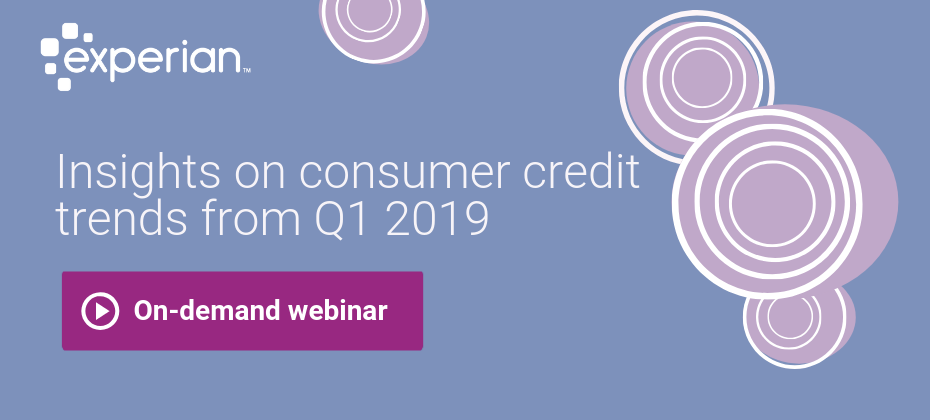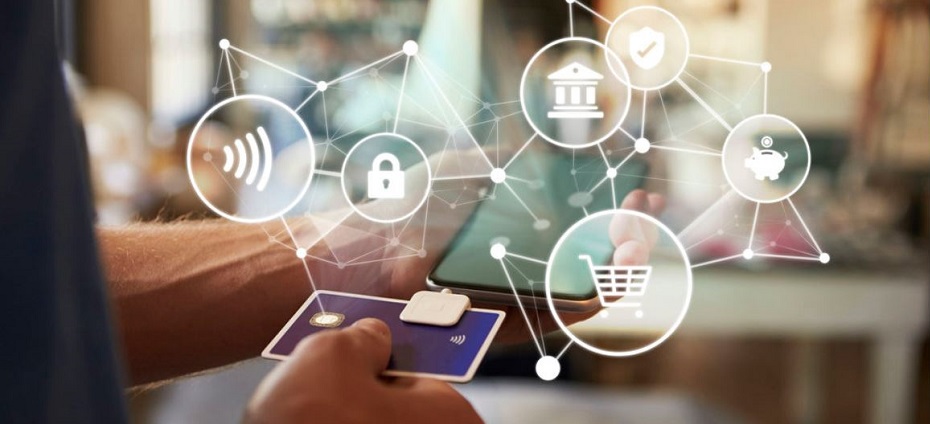Tag: credit card

As the holiday shopping season kicks off, it’s prime time for fraudsters to prey on consumers who are racking up rewards points as they spend. Find out how fraud trends in loyalty and rewards programs can impact your business: Are you ready to prevent fraud this holiday season? Get started today

As customer service continues its rapid shift to digital channels, consumer-finance companies have a powerful opportunity to engage customers and add value to the user experience. Credit education solutions can give customers valuable, personalized information and help lenders deliver relevant, prequalified credit offers that meet customers’ needs. The digital shift is well under way. The U.S. Consumer Financial Protection Bureau (CFPB), in its 2017 Consumer Credit Card Market Report, documents ongoing customer migration to digital platforms for every stage of the consumer interaction with creditors. In a survey of card lenders the CFPB characterizes as “mass market issuers,” which represent the majority of general-purpose and private-label credit cards issued in the U.S: In the past, mail and in-branch credit applications were the most popular conversion points for lenders, but today digital applications dominate, crushing direct mail as the biggest application generator. Beyond increasing customer acquisition and providing a channel for new applications, digital solutions are reshaping the entire consumer-finance process, creating a new end-to-end experience for banking consumers As consumers increasingly adopt digital channels for dealing with their finances, consumer finance companies face both a major opportunity and a significant challenge. Digital channels offer a powerful conduit for marketing additional products and services to customers, but fostering customer engagement with platforms can be tricky, as customer expectations are constantly evolving. The hallmark of digital channels is their convenience, which can be a double-edged sword for financial institutions. Quick, efficient digital services don’t give customers much reason to linger, and that can make it hard to create and act on cross-selling opportunities. So consumer finance companies that hope to boost engagement—and cross-sell opportunities—with their digital platforms must do so with valuable, compelling solutions—ideally interactive financial wellness tools that are personalized and highly relevant to the customer: Accenture, in its 2019 Global Financial Services Consumer Study, found significant majorities of consumers place high value on services including: Advice that is more relevant to personal circumstances Personalized services/ information that helps to reduce the risk of injury, loss, etc. Partnering with Experian, enables consumer-finance companies to provide customers with the kind of useful, high-value information customers want: Experian’s Credit Education services can help improve customers’ financial lives, Experian Identity Protection can help detect identity fraud and data theft. Experian’s credit-education services use customer credit data to help them set and track credit-improvement goals. Experian identity protection services can alert consumers immediately when suspicious activity is detected on their accounts (or in the names of their children) and can even help resolve cases of data abuse. The same access to credit data that powers Experian’s credit education services can help consumer-finance partners precision-target credit offers as their customers’ evolve in their needs and creditworthiness. Experian offers credit education and identity protection services as turnkey solutions, including fully hosted white-label platforms, hybrid options and APIs. Consumer-finance companies can quickly deploy these solutions, adapted to their own brand, to increase engagement and cross-sell opportunities and add meaningful value to the user experience. Learn more on our website

Consumer credit trends are continuously changing, making it imperative to keep up with the latest developments in originations, delinquencies on mortgages, credit cards and auto loans. By monitoring consumer behavior and market trends over time, you can predict and prepare for potential issues within each market. In this 30-minute webinar, our featured speakers, Gavin Harding, Experian Senior Business Consultant, and Alan Ikemura, Experian Data Analytics Senior Product Manager, reveal Q1 2019 market intelligence data and explore recent advances in consumer credit trends. Watch our on-demand webinar

It’s been over 10 years since the first rumblings of Great Recession started in 2008. Today, Americans are experiencing high levels of consumer confidence, marked by high employment rates and increasing credit balances over last year. What have we learned over the last decade? And how do we compare to our behaviors then? Experian released the 9th annual state of credit report, which provides a comprehensive look at the credit performance of consumers across America by highlighting consumer credit scores and borrowing behaviors. Who’s faring the best since the recession? According to the data, younger consumers. “We’re continuing to see the positive effects of economic recovery, especially among younger consumers,” said Michele Raneri, Vice President of Analytics and Business Development at Experian. “Since the recession, responsible credit card behaviors and lower debt among younger consumers is driving an upward trend in average credit scores across the nation. Over the last ten years, those 18 – 21 increased their credit scores by 23 points on average compared to those 18-21 ten years ago.” As a whole, 2018 was a year marked by financial reform, consumer protection and the return of volatility for the financial markets. A large portion of the analytics from this year’s report took a close look at the credit behaviors of today and compared them to 2008, the year the US headed into the worst recession in 80 years. 10-Year Lookback 2008 2017 2018 Average number of credit cards 3.40 3.06 3.04 Average credit card balances $7,101 $6,354 $6,506 Average number of retail credit cards 3.03 2.48 2.59 Average retail credit card balances $1,759 $1,841 $1,901 Average VantageScore® credit score [1,2] 685 675 680 Average revolving utilization 28% 30% 30% Average non-mortgage debt $23,929 $24,706 $25,104 Average mortgage debt $191,357 $201,811 $208,180 Average 30 days past due delinquency rates 5.4% 4.0% 3.9% Average 60 days past due delinquency rates 2.9% 1.9% 1.9% Average 90+ days past due delinquency rates 7.1% 7.3% 6.7% In regards to credit scores, the average VantageScore® credit score increased 5 points from last year, reaching 680 , while still down from 2008. Segmented by state and gender, Minnesota had the highest credit scores for both men and women. Data also showed that women had higher credit scores than men, consistent with 2017 and 2008. The past year has been flooded with headlines illustrating increased spending for American consumers. How do the numbers compare with 2008 data? In comparison with 10 years ago, the number of retail trades since 2008 are down, while average balance is up, according to Experian’s State of Credit Report. Additionally, the number of credit cards is down for all age groups, and balance is also down for consumers 22-71 years of age. Average revolving utilization has creeped up in the past decade, but only two percentage points from 28% to 30%, while both average non-mortgage and mortgage debt has increased 5% and 9% respectively. Not surprisingly, the report reflects that delinquency rates have also increased over 20% since 2008, though down from last year. In conclusion, there’s a lot to learn from both 2008 and 2018. One of the most important and resonating takeaways might be that while fortune may not seem to favor the young, younger consumers are exhibiting responsible behaviors and higher credit scores, setting a precedence for consistent and better financial health in the future. Learn more Experian Boost can help consumers instantly improve their credit score by incorporating their positive payment history from utility and phone bills, among other consumer-permissioned data. [1] VantageScore® is a registered trademark of VantageScore Solutions, LLC. [2] VantageScore® credit score range is 300-850 Calculated on the VantageScore® model. Your VantageScore® credit score from Experian indicates your credit risk level and is not used by all lenders, so don’t be surprised if your lender uses a score that’s different from your VantageScore® credit score.

Perhaps more than ever before, technology is changing how companies operate, produce and deliver products and services to their customers. Similarly, technology is also driving a shift in customer expectation in how, when and where they consume products and services. But these changes aren’t just relegated to the arenas where tech giants with household names, like Amazon and Google, play. Likewise, financial institutions of every size are also fielding the changes brought on by innovations to the industry in recent years. According to this report by PWC, 77% of firms plan on dedicating time and budgets to increase innovation. But what areas make the most sense for your business? With a seemingly constant shift in consumer and corporate focus, it can be difficult to know which technological advancements are imperative to your company’s success and which are just the latest fizzling buzzword. As you evaluate innovation investments for your organization in 2019 and beyond, here’s a list of four technology innovations that are already changing the financial sector or will change the banking landscape in the near future. The APIs of Open Banking Ok, it’s not a singular innovation, so I’m cheating a bit here, but it’s a great place to begin the conversation because it comprises and sets the stage for many of the innovations and technologies that are in use today or will be implemented in the future. Created in 2015, the Open Banking Standard defined how a bank’s system data or consumer-permissioned financial data should be created, accessed and shared through the use of application programming interfaces or APIs. When financial institutions open their systems up to third-party developer partners, they can respond to the global trends driving change within the industry while greatly improving the customer experience. With the ability to securely share their financial data with other lenders, greater transparency into the banking process, and more opportunities to compare product offerings, consumers get the frictionless experience they’ve come to expect in just about every aspect of life – just not necessarily one that lenders are known for. But the benefits of open banking are not solely consumer-centric. Financial institutions are able to digitize their product offerings and thus expand their market and more easily share data with partners, all while meeting clients’ individualized needs in the most cost-effective way. Biometrically speaking…and smiling Verifying the identity of a customer is perhaps one of the most fundamental elements to a financial transaction. This ‘Know Your Customer’ (KYC) process is integral to preventing fraud, identity theft, money laundering, etc., but it’s also time-consuming and inconvenient to customers. Technology is changing that. From thumbprint and, now, facial recognition through Apple Pay, consumers have been using biometrics to engage with and authorize financial transactions for some time now. As such, the use of biometrics to authenticate identity and remove friction from the financial process is becoming more mainstream, moving from smartphones to more direct interaction. Chase has now implemented voice biometrics to verify a consumer’s identity in customer service situations, allowing the company to more quickly meet a customer’s needs. Meanwhile, in the US and Europe, Visa is testing biometric credit cards that have a fingerprint reader embedded in the card that stores his or her fingerprint in order to authenticate their identity during a financial transaction. In China, companies like Alipay are taking this to the next level by allowing customers to bypass the phone entirely with its ‘pay with a smile’ service. First launched in KFC restaurants in China, the service is now being offered at hospitals as well. How, when and where a consumer accesses their financial institution data actually creates a digital fingerprint that can be verified. While facial and vocal matching are key components to identity verification and protecting the consumer, behavioral biometrics have also become an important part of the fraud prevention arsenal for many financial institutions. These are key components of Experian’s CrossCore solution, the first open fraud and identity platform partners with a variety of companies, through open APIs discussed above. Not so New Kid on the Block(chain) The first Bitcoin transaction took place on January 12, 2009. And for a number of years, all was quiet. Then in 2017, Bitcoin started to blow up, creating a scene reminiscent of the 1850s California gold rush. Growing at a seemingly exponential rate, the cryptocurrency topped out at a per unit price of more than $20,000. By design cryptocurrencies are decentralized, meaning they are not controlled or regulated by a single entity, reducing the need for central third-party institutions, i.e. banks and other financial institutions to function as central authorities of trust. Volatility and regulation aside, it’s understandable why financial institutions were uneasy, if not skeptical of the innovation. But perhaps the most unique characteristic of cryptocurrencies is the technology on which they are built: blockchain. Essentially, a blockchain is just a special kind of database. The database stores, validates, transfers and keeps a ledger of transfers of encrypted data—records of financial transfers in the case of Bitcoin. But these records aren’t stored on one computer as is the case with traditional databases. Blockchain leverages a distributed ledger or distributed trust approach where a full copy of the database is stored across many distributed processing nodes and the system is constantly checking and validating the contents of the database. But a blockchain can store any type of data, making it useful in a wide variety of applications including tracking the ownership digital or physical assets or the provenance of documents, etc. From clearing and settlements, payments, trade finance, identity and fraud prevention, we’re already seeing financial institutions explore and/or utilize the technology. Santander was the first UK bank to utilize blockchain for their international payments app One Pay FX. Similarly, other banks and industry groups are forming consortiums to test the technology for other various uses. With all this activity, it’s clear that blockchain will become an integral part of financial institutions technology and operations on some level in the coming years. Robot Uprising Rise in Robots While Artificial Intelligence seems to have only recently crept into pop-culture and business vernacular, it was actually coined in 1956 by John McCarthy, a researcher at Dartmouth who thought that any aspect of learning or intelligence could essentially be taught to a machine. AI allows machines to learn from experience, adjust to new inputs and carry out human-like tasks. It’s the result of becoming ‘human-like’ or the potential to become superior to humans that creeps out people like my father, and also worries others like Elon Musk. Doomsday scenarios a la Terminator aside, it’s easy to see how the tech can and is useful to society. In fact, much of the AI development done today uses human-style reasoning as a model, but not necessarily the ultimate aim, to deliver better products and services. It’s this subset of AI, machine learning, that allows companies like Amazon to provide everything from services like automatic encryption in AWS to products like Amazon Echo. While it’s much more complex, a simple way to think about AI is that it functions like billions of conditional if-then-else statements working in a random, varied environment typically towards a set goal. Whereas in the past, programmers would have to code these statements and input reference data themselves, machine learning systems learn, modify and map between inputs and outputs to create new actions based on their learning. It works by combining the large amounts of data created on a daily basis with fast, iterative processing and intelligent algorithms, allowing the program to learn from patterns in the data and make decisions. It’s this type of machine learning that banks are already using to automate routine, rule-based tasks like fraud monitoring and also drive the analytical environments used in their risk modeling and other predictive analytics. Whether or not you’ve implemented AI, machine learning or bot technology into your operations, it’s highly likely your customers are already leveraging AI in their home lives, with smart home devices like Amazon Echo and Google Home. Conversational AI is the next juncture in how people interface with each other, companies and life in general. We’re already seeing previews of what’s possible with technologies like Google Duplex. This has huge implication for the financial services industry, from removing friction at a transaction level to creating a stickier, more engaging customer experience. To that end, according to this report from Accenture, AI may begin to provide in-the-moment, holistic financial advice that is in a customer’s best interest. It goes without saying that the market will continue to evolve, competition will only grow more fierce, consumer expectation will continue to shift, and regulation will likely become more complex. It’s clear technology can be a mitigating factor, even a competitive differentiator, with these changing industry variables. Financial institutions must evolve corporate mindsets in their approach to prioritize innovations that will have the greatest enterprise-wide impact. By putting together an intelligent mix of people, process, and the right technology, financial institutions can better predict consumer need and expectation while modernizing their business models.

Are You #TeamTrended or #TeamAlternative? There’s no such thing as too much data, but when put head to head, differences between the data sets are apparent. Which team are you on? Here’s what we know: With the entry and incorporation of alternative credit data into the data arena, traditional credit data is no longer the sole determinant for credit worthiness, granting more people credit access. Built for the factors influencing financial health today, alternative credit data essentially fills the gaps of the traditional credit file, including alternative financial services data, rental payments, asset ownership, utility payments, full file public records, and consumer-permissioned data – all FCRA-regulated data. Watch this video to see more: Trended data, on the other hand shows actual, historical credit data. It provides key balance and payment data for the previous 24 months to allow lenders to leverage behavior trends to determine how individuals are utilizing their credit. Different splices of that information reveal particular behavior patterns, empowering lenders to then act on that behavior. Insights include a consumer’s spend on all general purpose credit and charge cards and predictive metrics that identify consumers who will be in the market for a specific type of credit product. In the head-to-head between alternative credit data and trended data, both have clear advantages. You need both on your roster to supplement traditional credit data and elevate your game to the next level when it comes to your data universe. Compared to the traditional credit file, alternative credit data can reveal information differentiating two consumers. In the examples below, both consumers have moderate limits and have making timely credit card payments according to their traditional credit reports. However, alternative data gives insight into their alternative financial services information. In Example 1, Robert Smith is currently past due on his personal loan, whereas Michelle Lee in Example 2 is current on her personal loan, indicating she may be the consumer with stronger creditworthiness. Similarly, trended data reveals that all credit scores are not created equal. Here is an example of how trended data can differentiate two consumers with the same score. Different historical trends can show completely different trajectories between seemingly similar consumers. While the traditional credit score is a reliable indication of a consumer’s creditworthiness, it does not offer the full picture. What insights are you missing out on? Go to Infographic Get Started Today

The concept of the credit card was originally envisioned by utopian novelist Edmond Bellamy in 1887 in his utopian novel “Looking Backward.” And ever since the first credit card was introduced almost 70 years ago, people have been absolutely crazy for them. The average American has roughly three of them in her wallet, each with an average balance of $6354 ($1841 for retail cards). Total US credit card debt tipped over $1 trillion in 2017 and continues to climb at around 5% a year. With all of that consumer enthusiasm, you’d be right to assume that it’s a fantastic business to be in. But the credit card industry of today is nothing if not competitive and, with literally thousands of credit card products out there, it’s exceptionally hard to stand out. Our wallets are overflowing with cards and our mailboxes are awash with card offers, yet few people could explain the differences between them. In addition, the industry has lost ground to an ever-proliferating list of alternative payment methods, including mobile peer-to-peer payment services and prepaid debit cards. Furthermore, the advent of big data and alternative underwriting models could allow some tech upstarts to refinance balances at lower interest rates – especially if they’re willing to accept slightly lower returns than credit card companies have become accustomed to. So while the industry as a whole appears to be quite healthy, it’s clear that in order to differentiate credit card companies need to be more innovative than they are today. And the first step towards coming up with new, innovative ideas is acknowledging your vulnerabilities. Six vulnerabilities in the credit card industry Credit card companies face threats on many sides, making it hard to know where to start initiating change. Here are some of the top vulnerabilities that face the credit card industry today. 1. Retailers are starting to balk at high fees In 2016, Costco concluded its exclusive partnership with American Express in favor of Visa and Citibank. While that transition was painful at times, analysts from BMO Capital Markets estimated that switch would save the retailer between $110 million and $220 million in interchange fees. Later that year, Walmart Canada announced that it intended to stop accepting Visa credit cards in its 400 stores, citing high transaction fees. The two companies resolved the dispute after six months, and neither company disclosed the new terms. But it wouldn’t be the last time it happened. Foods Co., a California-based Kroger family company, stopped accepting Visa credit cards in its 21 stores and five gas stations in August 2018 over a fee dispute. Its parent company stated that it’s considering following suit. When large retailers stop accepting certain payment networks or changing their preferred payment network over fee disputes, it’s not just the payment networks that suffer. Credit card issuers also miss out when their cardholders can no longer use certain cards at their favorite retailer. 2. Fintech companies competing for loyalty Fintech companies are providing many services that credit cardholders can’t always get with their card issuer. Some, for example, provide credit monitoring services that help consumers build or rebuild their credit. Other fintech companies are using alternative and trended credit data in their underwriting process. Earnest, for example, not only checks applicants’ credit scores but also looks at savings patterns, investment balances, and employment growth potential. Fannie Mae, the largest source of funding for mortgage lenders, began using trended credit data, which provides a deeper look at a borrower’s credit history, for single-family mortgage applications in 2016. By using alternative and trended credit data to evaluate prospective borrowers, these and other companies can find new customer markets and achieve more predictive decisions than the traditional way of measuring risk. 3. Mobile payment services bypassing credit card companies Apple Pay, Samsung Pay and Google Pay make it easier and safer for cardholders to use their credit cards when shopping online and at retail stores. That said, these services could start using their own payment infrastructure in the future, bypassing credit cards entirely. Peer-to-peer mobile payment services including PayPal, Venmo and Square, already do this. In fact, they charge a fee for credit card payments, which effectively forces most users to use a debit card or checking account instead. 4. Increased use of debit cards undercuts credit cards Consumers made 73.8 billion payments with a debit card in 2016, according to the Federal Reserve, with a value of $2.7 trillion. That’s roughly three times the volume and value of debit card payments a decade earlier. During that same time, the volume and value of credit card payments increased by closer to 1.5 times. While that’s still an upward trend, debit cards use is gaining more steam. Younger consumers are likely driving this trend toward debit instead of credit. A study conducted by Harris Poll recently found that Millennials carry fewer credit cards than older generations and appear far more debt warry. Also, according to a TD Bank survey, Millennials spend more than twice as much using cash, debit cards and checks than the average American. Some banks including Discover and American Express, have begun offering cash-back rewards to their debit and prepaid debit cardholders. These rewards programs may start to catch on with other banks, making debit cards a reasonable alternative to credit card holders who prefer debit but don’t want to miss out on cash back. 5. Challenger brands are targeting underserved customers Many major credit card issuers focus more on the prime and near-prime market, opening up the way for challenger brands to capture market share among consumers who are new to credit or looking to rebuild. Deserve, for instance, has raised more than $78 million to provide a credit card to international students with no Social Security number requirement. It also offers an unsecured credit card designed for consumers with no credit history. Another example is Petal, which has raised close to $17 million from investors to provide a no-fee, unsecured credit card to help consumers build credit — all with no credit score requirement. 6. A persistent lack of security in credit card transactions Credit card fraud was the most common form of identity theft reported to the Federal Trade Commission in 2017, according to a report by Experian. And while credit card companies have made strides to prevent fraudsters from accessing credit card information, perpetrators are getting smarter and more sophisticated, making it hard for card issuers to keep up. With consumer credit card debt rapidly growing and APR’s on the rise, the current credit card boon simply can’t last forever. The market will eventually shrink and a game of “Survivor” will ensue. So it would be wise for credit card companies to take stock of their vulnerabilities now and start getting ahead of the pack. Visit our website for more information on identity protection products you can offer your customers.

The credit card marketplace is a crowded and complex landscape. Recent research by Experian shows the average U.S. consumer has 3.1 credit cards and 2.5 retail cards, with an average balance of $6,354 and $1,841, respectively. So how can you build upon your existing customer relationships and offer the right products to the right people at the right time? By understanding consumer behavior. Pretty simple concept. But targeting viable consumers and making enticing offers takes some detective work. Gone are the days of demographic-based approach to audience segmentation for credit marketing campaigns. Consumers are now engaged on their smartphones, laptops, tablets, fitness bands, across countless apps, browsers, emails and more. Simply knowing a person’s gender and age doesn’t provide any information about how he spends the day, his consumer behaviors, personal interests, unique wants or needs. Developing rich consumer personas based on transaction credit data can be a powerful tool to understanding consumers so lenders can design more relevant and personalized credit offers, experiences and products to a very targeted audience. Experian DataLabs can help by analyzing transaction data to understand the consumers in your portfolio. For example, looking at your portfolio of 40-year-olds in the U.S. provides basic demographic information. A closer look at transaction data could reveal unique details within the age group to help you group and target, such as: Frequent travelers: These road warriors log serious miles. If they’re not traveling for work, they’re cashing in miles for vacation. This unique group leads your portfolio in airfare, cruise line, car rental, hotel and travel agency spend. With so much time spent away from home, this group is rarely found in grocery stores. Local business owners: Advertising, computer equipment, and software are typical expenses of this segmented group. There may be an opportunity to capture spend outside their business activity or to ensure they have the right card to fit their business needs. Constant commuters: These consumers use their card for local travel and transportation. And they are less likely to use their card for expenses related to other types of travel or maintaining a vehicle. After a long day, they like to grab a drink while waiting for the train. Online Shoppers: Consumers in this group use their card with various online merchants, including Amazon, Etsy, iTunes, and PayPal. Online shoppers are also above average spenders in elementary education, child care services, and family clothing. Social hipsters: They can be found meeting with friends for coffee and drinks, and are more likely to rely on local transportation and tend to eat out instead of cooking in. Effective audience segmentation ensures that your marketing dollars are invested in real people who are most likely to respond on certain media, have already expressed an interest in your product, and are geographically accessible to a specific retail location. Every campaign should be as dynamic and unique as its consumers. The powerful combination of consumer and transaction data allows you to customize audience segments to maximize customer engagement and drive campaign success.

The holidays can be a stressful time for consumers — and an important time for lenders to anticipate the aftermath of big credit card spending. According to our recent study with Edelman Intelligence: 56% of respondents said holiday shopping puts a strain on their finances. 43% said the stress of holiday shopping makes it difficult to enjoy the season. With the holiday shopping season over, those hefty credit card statements are coming soon. Now is the time for lenders to prepare for the January and February consolidations. Want to know more?